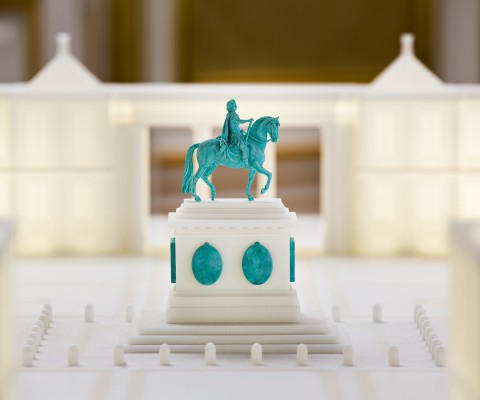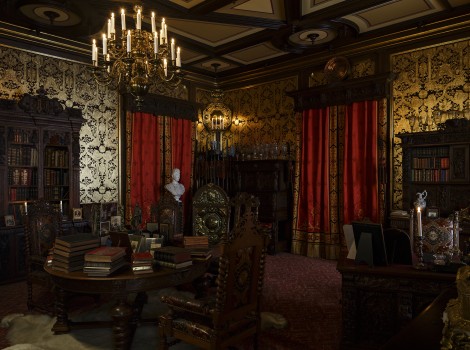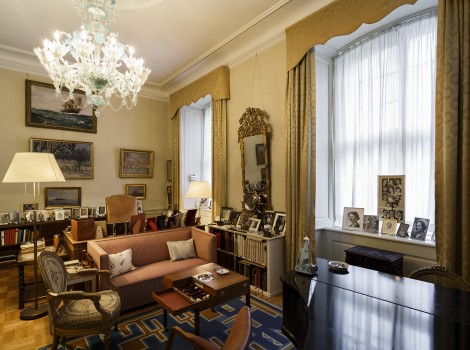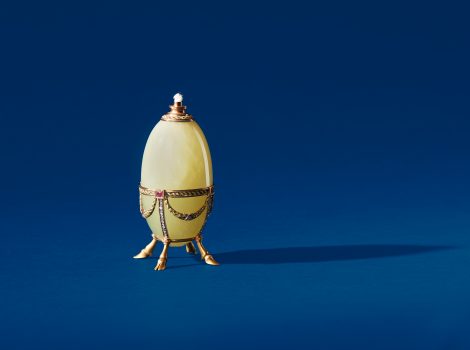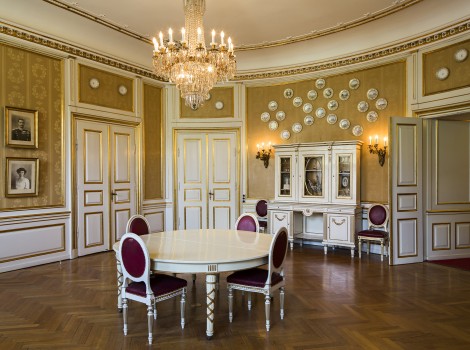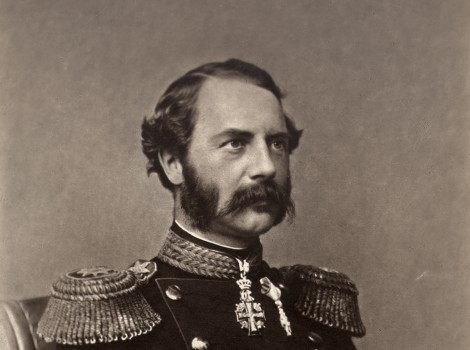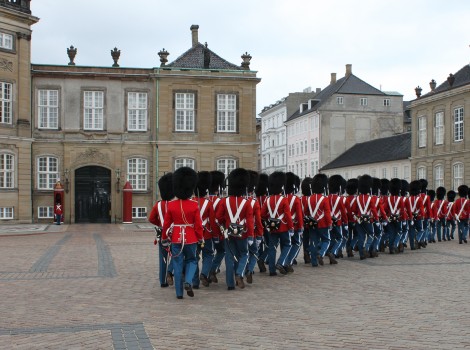Collection history
The museum in Christian VIII’s Palace is a recent addition to Rosenborg’s royal collections, which were founded by Frederik III in the 1660s. At the beginning of the 19th century the idea of opening Rosenborg to the public arose, and in 1812 the principle, which is still current, was established that the historical interiors chronologically follow the changing generations of the Royal Family. The Danish Royal Collections was founded in 1833, and Rosenborg was opened to the public in 1838. A tour of the palace thus became a journey through Danish history from the time of Christian IV to the present moment, since there at the opening was a room furnished for Frederik VI, who lived until the following year. In 1868 a room was furnished for Frederik VII, who had died five years previously, and Christian IX was also given a room at Rosenborg in 1910. The limited space at Rosenborg was now utilised to the full, and if later kings were to be added, it would have to be somewhere else.
At first Christian IX’s Palace at Amalienborg presented itself as a possibility. The palace had been left as good as untouched since the death of Christian IX in 1906, and in the 1950s Christian IX’s study and Queen Louise’s salon were preserved on the initiative of Frederik IX and Queen Ingrid. Furthermore, it was ensured that Christian X’s study in Christian VIII’s Palace, which was packed away following Queen Alexandrine’s death in 1952, was preserved. In 1956 Frederik IX created by royal resolution the juridical basis for the establishment of The Royal Danish Collections at Amalienborg. Thus in 1977 a museum for the House of Glücksburg opened in part of the ground floor of Christian IX’s Palace, but it already closed again in 1982, as running a museum in the Royal Couple’s palace of residence proved in practice to be inexpedient.
After an extensive restoration of Christian VIII’s Palace the opportunity arose to re-establish the museum on the ground floor of this palace, which more than doubled the previous exhibition space. In 1994 the museum was reopened here, and remained true to the original idea: to exhibit a series of historical interiors which trace the royal generations. At the opening the museum included Christian IX’s study, Queen Louise’s salon, Christian X’s study, as well as Christian X and Queen Alexandrine’s dining room. The large exhibition space also afforded the opportunity to reconstruct Frederik VIII’s study, and more rooms were made available to the museum, which are today known as The Garden Room, The Costume Gallery, and The Golden Cage. In the 1990s the museum was entrusted with Frederik IX’s study as it had looked on the king’s death in 1972. The room was opened to the public on the occasion of the King’s 100th birthday on 11 March 1999.
Since its opening the museum has arranged guided tours on the palace’s piano nobile, where you can see Nicolai Abildgaard’s magnificent neoclassical interiors, which he created at the request of Hereditary Prince Frederik after the royal assumption of Amalienborg in 1794. Since July 2013 the piano nobile has been open to the museum’s visitors every Saturday.
 Dansk
Dansk
 English
English
 Deutsch
Deutsch

